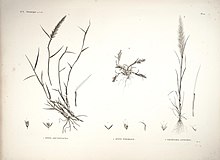
Rubiaceae is a family of flowering plants, commonly known as the coffee, madder, or bedstraw family. It consists of terrestrial trees, shrubs, lianas, or herbs that are recognizable by simple, opposite leaves with interpetiolar stipules and sympetalous actinomorphic flowers. The family contains about 14,100 species in about 580 genera, which makes it the fourth-largest angiosperm family. Rubiaceae has a cosmopolitan distribution; however, the largest species diversity is concentrated in the tropics and subtropics. Economically important genera include Coffea, the source of coffee; Cinchona, the source of the antimalarial alkaloid quinine; ornamental cultivars ; and historically some dye plants.

Ranunculaceae is a family of over 2,000 known species of flowering plants in 43 genera, distributed worldwide.
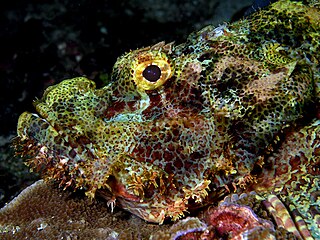
The Scorpaenidae are a family of mostly marine fish that includes many of the world's most venomous species. As their name suggests, scorpionfish have a type of "sting" in the form of sharp spines coated with venomous mucus. The family is a large one, with hundreds of members. They are widespread in tropical and temperate seas but mostly found in the Indo-Pacific. They should not be confused with the cabezones, of the genus Scorpaenichthys, which belong to a separate, though related, family, Cottidae.

Scilloideae is a subfamily of bulbous plants within the family Asparagaceae. Scilloideae is sometimes treated as a separate family Hyacinthaceae, named after the genus Hyacinthus. Scilloideae or Hyacinthaceae include many familiar garden plants such as Hyacinthus (hyacinths), Hyacinthoides (bluebells), Muscari and Scilla and Puschkinia. Some are important as cut flowers.
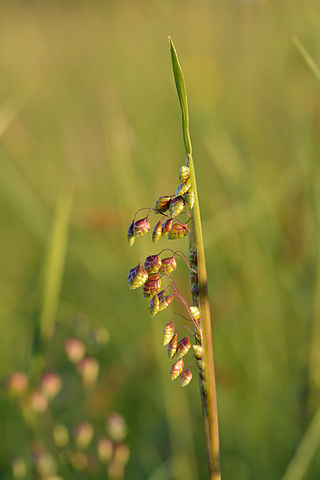
The Pooideae are the largest subfamily of the grass family Poaceae, with about 4,000 species in 15 tribes and roughly 200 genera. They include some major cereals such as wheat, barley, oat, rye and many lawn and pasture grasses. They are often referred to as cool-season grasses, because they are distributed in temperate climates. All of them use the C3 photosynthetic pathway.

Chloridoideae is one of the largest subfamilies of grasses, with roughly 150 genera and 1,600 species, mainly found in arid tropical or subtropical grasslands. Within the PACMAD clade, their sister group is the Danthonioideae. The subfamily includes widespread weeds such as Bermuda grass or goosegrass, but also millet species grown in some tropical regions, namely finger millet and teff.

The Arundinoideae are a subfamily of the true grass family Poaceae with around 40 species, including giant reed and common reed. Unlike many other members of the PACMAD clade of grasses, the Arundinoideae all use C3 photosynthesis. Their sister group is the subfamily Micrairoideae.

The Eumolpinae are a subfamily of the leaf beetles, or Chrysomelidae. It is one of the largest subfamilies of leaf beetles, including more than 500 genera and 7000 species. They are oval, and convex in form, and measure up to 10 mm in size. Typical coloration for this subfamily of beetles ranges from bright yellow to dark red. Many species are iridescent or brilliantly metallic blue or green in appearance.
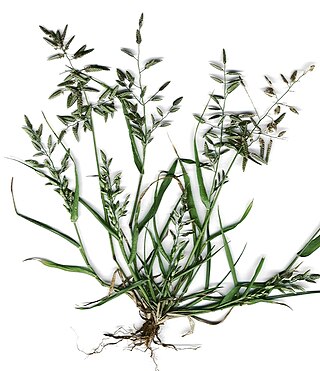
Eragrostideae is a tribe of grasses in subfamily Chloridoideae. It contains roughly 500 species, which all use the C4 photosynthetic pathway.

Oryzoideae (syn. Ehrhartoideae) is a subfamily of the true grass family Poaceae. It has around 120 species in 19 genera, notably including the major cereal crop rice. Within the grasses, this subfamily is one of three belonging to the species-rich BOP clade, which all use C3 photosynthesis; it is the basal lineage of the clade.

Danthonioideae is a mainly southern hemisphere subfamily of grasses, containing the single tribe Danthonieae and one unplaced genus, with altogether roughly 300 species. It includes herbaceous to partially woody perennial or annual (less common) grasses that grow in open grasslands, shrublands, and woodlands. It belongs to the PACMAD clade of grasses, but unlike some other lineages in that clade, grasses in the Danthonioideae exclusively use the C3 photosynthetic pathway. Its sister group is the subfamily Chloridoideae.

Olyreae is a tribe of grasses in the bamboo subfamily (Bambusoideae). Unlike the other two bamboo tribes, Olyreae are herbaceous and do not have a woody stem. Their sister group are the tropical woody bamboos (Bambuseae).

Paniceae is a large tribe of the subfamily Panicoideae in the grasses (Poaceae), the only in the monotypic supertribe Panicodae. It includes roughly 1,500 species in 84 genera, primarily found in tropical and subtropical regions of the world. Paniceae includes species using either of the C4 and C3 photosynthetic pathways, as well as presumably intermediate species. Most of the millets are members of tribe Paniceae.

Micrairoideae is a subfamily of the grass family Poaceae, distributed in tropical and subtropical regions. Within the PACMAD clade, it is sister to subfamily Arundinoideae.

Cynodonteae is a large tribe of grasses in the subfamily Chloridoideae, with over 800 species.
Steyermarkochloeae is a tribe of the Panicoideae subfamily in the grasses (Poaceae), native to tropical South America. There are only two species in two genera, Arundoclaytonia and Steyermarkochloa. The tribe probably belongs to a basal lineage within the subfamily. Species in this tribe use the C3 photosynthetic pathway.
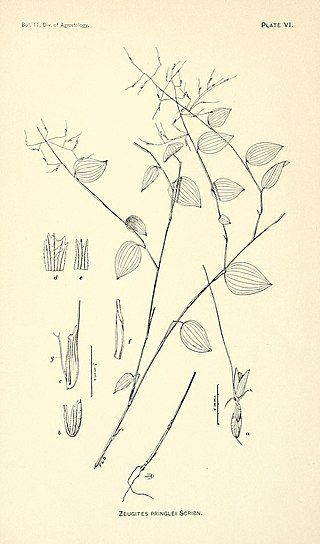
Zeugiteae is a tribe of the subfamily Panicoideae in the grasses (Poaceae), native to Africa, Asia, Australasia, South and Central America. There are 18 species in four genera. The tribe belongs to a basal lineage within the subfamily. Species in this tribe use the C3 photosynthetic pathway.
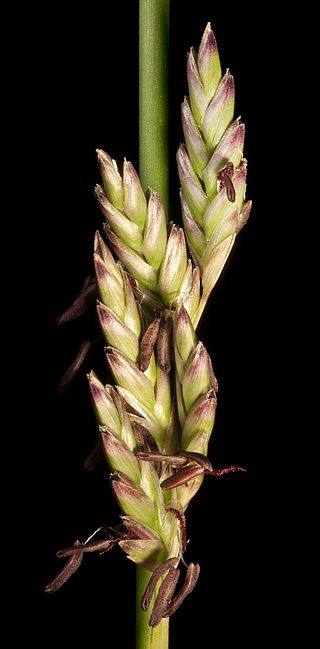
Cyperochloeae is a small tribe of grasses in the Panicoideae subfamily, found in Australia. It belongs to a basal lineage within the subfamily and has only two species in two monotypic genera, Cyperochloa and Spartochloa. They use the C3 photosynthetic pathway.
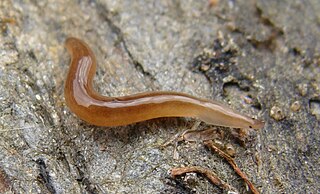
Rhynchodeminae is a subfamily of land planarians with a worldwide distribution.

Trochilini is one of the three tribes that make up the subfamily Trochilinae in the hummingbird family Trochilidae. The other two tribes in the subfamily are Lampornithini and Mellisugini (bees).
